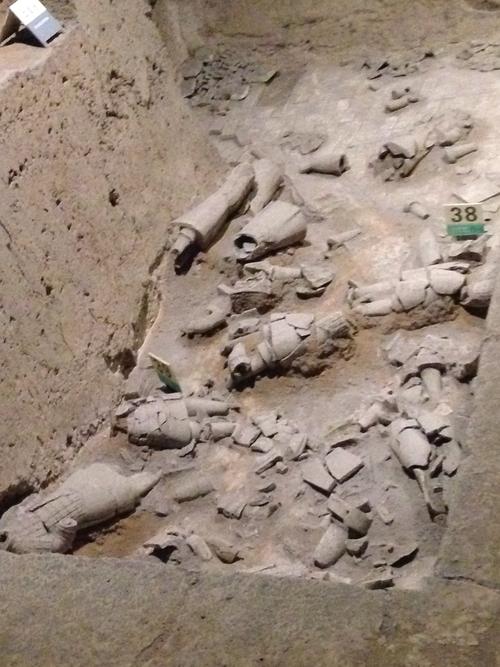
Why Were the Terracotta Warriors Damaged?
The Terracotta Army, a vast collection of life-sized terracotta sculptures depicting the armies of Qin Shi Huang, the first Emperor of China, stands as a testament to ancient Chinese artistry and military might. However, upon excavation, archaeologists discovered that many of these figures were damaged, some severely. While natural forces like earthquakes and erosion have played a part, evidence suggests a more deliberate act of destruction.
Xiang Yu: The Prime Suspect
Historical accounts and archaeological findings point to Xiang Yu, a rebel leader who overthrew the Qin dynasty, as the primary suspect behind the systematic destruction of the Terracotta Army.
Motive: Revenge and Erasing the Qin Legacy
Xiang Yu harbored a deep-seated resentment for the Qin dynasty, particularly towards Qin Shi Huang. He viewed the Qin rulers as tyrants who had usurped power and inflicted suffering upon his people. Destroying the Terracotta Army, a potent symbol of Qin Shi Huang's power and ambition, would serve as a powerful act of revenge and a way to symbolically dismantle the legacy of the hated dynasty.
Opportunity: Access and Timing
Following the fall of the Qin dynasty, Xiang Yu's forces were in control of the area where the Terracotta Army was buried. He had both the access and the opportunity to carry out the destruction.
Evidence: Burn Marks, Missing Weapons, and Collapsed Walls
Archaeological evidence supports the theory of intentional destruction. Many of the figures bear burn marks, indicating a massive fire. The pits also contained a significant amount of ash and charcoal, further supporting this claim. Additionally, almost all the bronze weapons originally held by the warriors are missing. It is highly improbable that looters would have systematically removed only the weapons without damaging the figures. The presence of collapsed walls and ceilings within the pits suggests deliberate attempts to bring down the structure and crush the figures.
Natural Factors: A Contributing Role
While Xiang Yu's actions are believed to be the primary cause of the damage, natural factors have also contributed to the deterioration of the Terracotta Army over the centuries.
Earthquakes: Shifting the Ground
The region where the Terracotta Army is located is prone to earthquakes. Seismic activity over centuries could have caused the ground to shift, leading to figures collapsing and breaking.
Erosion and Decay: The Ravages of Time
The natural process of erosion and decay have also taken a toll on the figures. Exposure to moisture, temperature fluctuations, and microorganisms present in the soil has resulted in the degradation of the terracotta material, causing it to become brittle and prone to damage.
Conclusion
While the passage of time and natural forces have undoubtedly contributed to the deterioration of the Terracotta Army, evidence strongly suggests that the majority of the damage was inflicted intentionally by Xiang Yu and his rebel forces. Their actions were likely driven by a potent mix of revenge, political expediency, and a desire to erase the legacy of the Qin dynasty. Despite the damage, the Terracotta Army remains a powerful and evocative symbol of ancient China, offering a glimpse into its imperial past.
Q&A
What happened to the weapons originally held by the Terracotta Warriors?
Almost all the bronze weapons were missing when the army was excavated. It is believed that Xiang Yu's troops looted the tombs and took the weapons for their own use.
Were all the Terracotta Warriors damaged?
While many warriors show signs of damage, not all were impacted to the same degree. Some figures remained relatively intact, while others were severely crushed or burned.
Why is Xiang Yu considered the most likely culprit for the destruction?
Xiang Yu had both the motive (revenge against the Qin dynasty) and the opportunity (his forces controlled the area) to carry out the destruction. Archaeological evidence such as burn marks and collapsed walls further supports this theory.